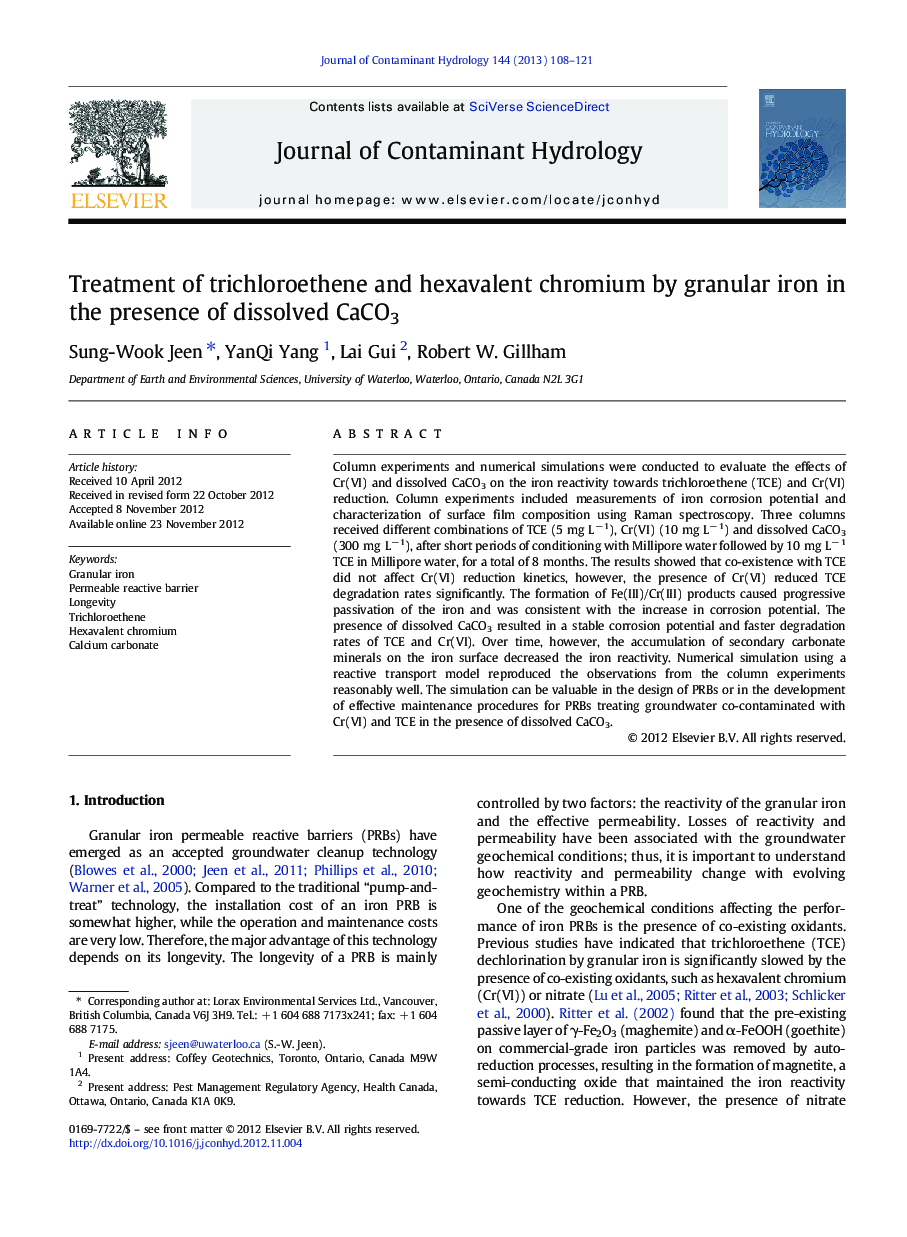| Article ID | Journal | Published Year | Pages | File Type |
|---|---|---|---|---|
| 4546725 | Journal of Contaminant Hydrology | 2013 | 14 Pages |
Column experiments and numerical simulations were conducted to evaluate the effects of Cr(VI) and dissolved CaCO3 on the iron reactivity towards trichloroethene (TCE) and Cr(VI) reduction. Column experiments included measurements of iron corrosion potential and characterization of surface film composition using Raman spectroscopy. Three columns received different combinations of TCE (5 mg L− 1), Cr(VI) (10 mg L− 1) and dissolved CaCO3 (300 mg L− 1), after short periods of conditioning with Millipore water followed by 10 mg L− 1 TCE in Millipore water, for a total of 8 months. The results showed that co-existence with TCE did not affect Cr(VI) reduction kinetics, however, the presence of Cr(VI) reduced TCE degradation rates significantly. The formation of Fe(III)/Cr(III) products caused progressive passivation of the iron and was consistent with the increase in corrosion potential. The presence of dissolved CaCO3 resulted in a stable corrosion potential and faster degradation rates of TCE and Cr(VI). Over time, however, the accumulation of secondary carbonate minerals on the iron surface decreased the iron reactivity. Numerical simulation using a reactive transport model reproduced the observations from the column experiments reasonably well. The simulation can be valuable in the design of PRBs or in the development of effective maintenance procedures for PRBs treating groundwater co-contaminated with Cr(VI) and TCE in the presence of dissolved CaCO3.
► Cr(VI) reduction products affected iron reactivity more than carbonates. ► Passivation of the iron was consistent with the increase in corrosion potential. ► The simulation can be valuable in the design of iron PRBs.
